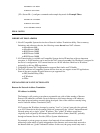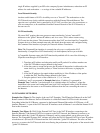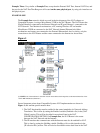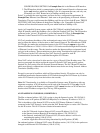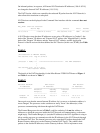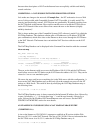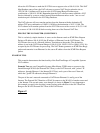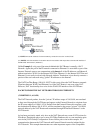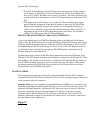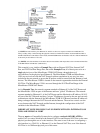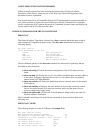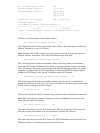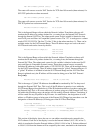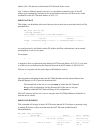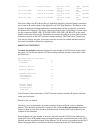
allows the NAT Router to make the NAT Web server appear to be at 198.41.9.194. This NAT
Map Database entry allows the NAT software to create a NAT Session when the site at
128.138.240.11 initiates an IP session to the NAT External Range IP address:port
combination of 198.41.9.195:80. Remember that the NAT software cannot establish a NAT
Session initiated by a source on the External Network/Internet unless such a "one−to−one"
translation pair is defined in the NAT Map Database.
The NAT software will now translate packets from the Internet with the destination IP
address:TCP port combination of 198.41.9.195:80 to the destination of 10.5.3.11:80. The
NAT software will translate packets from the NAT Web server with a source of 10.5.3.11:80
to a source of 198.41.9.195:80 before routing them out of the External NAT Port.
PINGING THE NAT ROUTER (CONDITION 2)
This is a relatively simple situation. A source on the Internet sends an ICMP Echo Request
Packet to IP address 198.41.9.195 (the IP address of Ethernet 0 on the NAT Router). The
NAT Router does not do a Network Address Translation on the packet. The destination
address is not in the NAT External Range of 198.41.9.194, 198.41.9.195 or 198.41.9.219. It is
accepted by the NAT Router for processing. The NAT Router generates an ICMP Echo Reply
packet and transmits it out Ethernet 0 to the source IP address from the ICMP Echo Request
packet.
EXAMPLE TWO
This example demonstrates the functionality of the PassThru Range of Compatible Systems
NAT software.
Example Two uses one Compatible Systems MicroRouter 2220R router to connect to the
Internet through WAN 0 (the External NAT Port), to the NAT Network, with "private" IP
addresses, through Ethernet 1 (the Internal NAT Port), and to part of the user's Network,
which has "global" IP addresses, through Ethernet 0.
The part of the user's network connected to NAT Router Ethernet 0 is really part of the
Internet. The External NAT Interface of WAN 0 connects to the WAN 0 of another router and
to the Internet. This second router, even though it is shown in Figure 2, is not important to
this example, except for the fact that it routes packets with addresses in the NAT PassThru
Range to the WAN 0 External NAT Port of the NAT Router.
Figure 2




